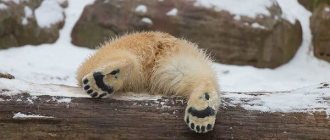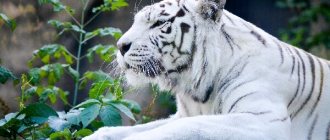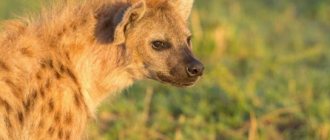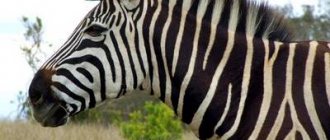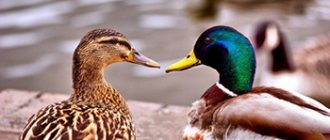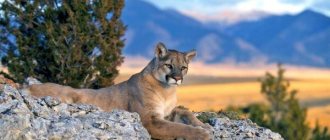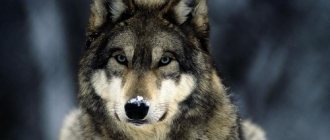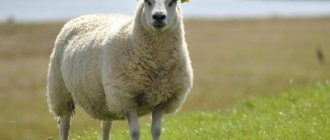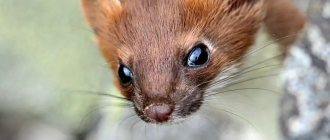The white lion is a very rare animal. It is listed in the Red Book and is under state protection. In some countries, the white lion is also a sacred animal. For example, in Africa, an attack on the life of the king of animals with white fur can be regarded as a challenge to the entire state.
The white lion is the hero of numerous legends of the peoples of Africa. One of the legends contains information that a snow-white lion was sent by the Gods to Earth to help humanity get rid of deadly diseases.
Description of the white lion
Such animals are not a separate subspecies, they are simply a rare color of African lions. Their white color is caused by a genetic change, a lack of pigmentation in the hair shaft.
There is no answer yet to the question of why only one species of lion is susceptible to this mutation. With a white color, the skin has completely normal pigmentation, so they cannot be called albinos. Such a lion cub can be born to a female who has a normal cream color. In the wild, the white lion is considered very rare and lives only in the Kruger National Park, located in the south-eastern part of Africa, and the Timbavati reserve. In captivity, where they are specially bred, these animals are much more common. They are kept in zoos in Philadelphia, Germany, Japan and other countries. Looking at photos of white lions, it is impossible not to admire their amazing beauty and nobility.
Nutrition
Lions are predators; their diet is based only on meat. In the wild, animals hunt collectively at night, and occasionally during the day. The roles are clearly defined. The male scares the prey with a terrible roar, fast and agile females quickly attack the victims. The surprise factor is very important, because lions can only run fast over short distances.
It is much more difficult for white lions to hunt due to the lack of camouflage color in their fur. Solitary hunting occurs by young males wandering without a pride. The efficiency of such food acquisition is only 17%, in contrast to 30% of collective hunting. The daily requirement of each lion is 7-8 kg of meat. In Africa, the prey of predators includes buffaloes, Thomson's gazelles, warthogs, zebras, and wildebeests.
A hungry white lion went hunting
Lucky and strong lions can cope with an adult giraffe, hippopotamus, and elephant. Animals do not refuse carrion and livestock; they take prey from other predators that are smaller in size than lions.
Lions, unable for various reasons to capture large prey, feed on rodents, birds, reptiles, pick up ostrich eggs, and eat hyenas and vultures. At one time, a lion can eat from 18 to 30 kg of meat. In the following days, they can go without food for up to 3-14 days. The diet in zoos is not as varied as in the wild. Lions are fed mainly beef.
Legend
Since ancient times and to this day, African tribes have revered the white lion as a messenger from above, they worship him as a sacred creature and protect him. People severely punish anyone who even unintentionally kills this animal.
A beautiful African legend, passed down from generation to generation, says that in ancient times a terrible scourge in the form of disease and deprivation struck the tribes. Humanity was on the verge of extinction. Unable to cope with the forces of nature, people prayed to their gods day and night, begging for salvation. The gods had mercy, and they sent a white lion to earth, who brought people relief from suffering and illness, after which he went back, promising to return when danger looms over humanity again.
Habitat
10 thousand years ago, lions were the most numerous representatives of the cat family on the planet, and their habitat extended throughout Africa, except for the Sahara Desert. These predators were also found on the Eurasian continent, inhabiting Greece, the countries of the Balkan Peninsula and the territory of present-day Russia, including the Caucasus. The Asian subspecies of lions was found in countries such as India, Iran, Turkey and Palestine.
The lion once reigned over three continents
Unfortunately, lion skin has always been a valuable trophy, and hunting these delightful cats was considered prestigious, both among the nobles of developed civilizations and among backward aboriginal tribes.
And the ancient Romans had fun not only by baiting wild animals, but also used them as gladiators in the arena; fights of huge cats were especially popular among the public.
The cruelty of man and his irresistible urge to kill wild animals led to the fact that before the 1st century AD all lions in Europe were destroyed. And on other continents, their natural environment was steadily declining. For example, the Asiatic lion lives exclusively in the Gir Forest, a national reserve in the Indian state of Gujarat.
And the range of African huge cats is limited to the following countries of the Black Continent:
- Namibia;
- Ethiopia;
- Burkina Faso;
- Angola;
- Tanzania;
- Kenya;
- Senegal;
- Mozambique;
- Zimbabwe;
- Zaire;
- Democratic Republic of the Congo;
- Nigeria;
- Zambia;
- Botswana.
African lion prides prefer to settle in savannas with sparse bushes and natural water sources, and nomadic individuals choose forested areas for residence, setting up their lairs in dense thickets of tropical vegetation. In India, lions live in scrub forests interspersed with dry savannas and sandy plains.
Reality
It's all about the unique color of these lions, which gives rise to various legends and myths. White color is determined by a certain genetic combination. There are lions that have a white/brown genetic pair (they are called heterozygous lions).
In order for white offspring to appear, such a lion must certainly mate with a lioness, who also has a white/brown genetic pair. As a result of this union, a gene for either white or brown is passed on to the offspring, which gives the chance of producing a white lion cub (about one in four). It happens that the baby at birth is black and white. As the lion grows, it gradually becomes completely snow-white.
Leo - characteristics and description
When characterizing an animal such as a lion, you need to provide a description of it. The different species are slightly different from each other, but they have a lot in common.
The animal belongs to the cat family, therefore in appearance it is similar to domestic cats, only it is significantly larger than them. It is one of the largest representatives of this family, second only to the tiger.
The body of the animal is flexible and mobile; they have well-developed muscles of the front legs and neck. There are claws on the paws, the length of which reaches 7 cm. Its head is large, with an elongated muzzle and strong jaws. His fangs are long (about 8 cm), the number of teeth is 30. These features give the lion the ability to hunt large herbivores. The tongue is covered with tubercles, thanks to which the lion can clean its fur from dirt and eliminate insects.
On the muzzle there are whiskers, at the base of which there are small dark spots. These spots form a pattern unique to each animal. Cubs are born spotted, but as they grow older, the spots on their body disappear, and the color of the coat becomes uniform - brown or sand. At the tip of the animal's tail there is a black tassel.
The main feature of this animal species is sexual dimorphism. A male lion and a lioness have significant differences. For example, it is impossible to say how much a lion weighs on average without knowing the sex of a particular individual. Males are significantly larger than females in size and weight. In addition, their head is decorated with a mane, which begins to grow in lion cubs from the age of 6 months. The length of the pile and the thickness of the mane depend on age and genetics.
Reasons for disappearance
White lions are on the verge of extinction, largely due to their high mortality rate, since the white color deprives them of the ability to camouflage. They are practically unable to sneak up on prey unnoticed, but at the same time they are an excellent target for hyenas. It is especially difficult for small lion cubs, who stand out as a white spot against the background of the savannah, to survive. The male, becoming sexually mature, is expelled from the pride to create his own. But the white lion has almost no chance of surviving alone.
Population conservation
In the effort to preserve the number of white lions, much of the credit goes to zoological centers. There are several genetic lines represented in zoos in Africa, the USA, Canada and Germany. Do not forget that the white lion, the photo of which you can see in this article, is not a separate subspecies, it is simply a variant of the unusual coloring of the African lion. This means that the entire African lion population needs to be protected.
In zoos, where most white lions live today, inbreeding is often used, which is very dangerous for the health of the future generation. Therefore, every effort must be made to restore the population naturally.
White lions today
According to the latest available data, there are fewer than three hundred individuals worldwide today. This, of course, is very small, but if you consider that forty years ago there were only three of them left, you can see the results of the work done to protect the population. In the 70s of the last century, it was decided to find confirmation of the legend of the African people about the existence of such an unusual animal as the white lion. There were no photographs or other evidence confirming their existence; the searches were carried out literally blindly. And now a lion and two lionesses aged eight weeks were discovered in the Timbavati game reserve. They were placed in a reserve. And today, some white lions live in the huge Sanbona Nature Reserve, located in South Africa. Here they are protected, they are not afraid of poachers, disease and hunger.
They can easily reproduce, thanks to which our descendants will be able to see them not only in photographs. White lions are also bred at the Zoological Animal Reproduction Center in Indiana. With proper care and under reliable protection, they can live up to twenty years.
Reproduction and lifespan
Lions are polygamous animals and can breed throughout the year, but the peak birth rate occurs during the rainy season. The main male of the pride always has priority choice of female. There is practically no fight for the female between lions. Sexual maturity of lions occurs at 4 years for females, at 5 years for males.
The frequency of birth of offspring in a lioness is once every two years. Pregnancy lasts up to 3.5 months. Before the birth of the offspring, the female leaves the pride, and after some time returns with the babies.
1-5 snow-white lion cubs are born, weighing 1-2 kg each. Newborn lion cubs are blind until the 11th day, when their eyes open. Babies begin to walk after 2 weeks, and at the age of one month they are already running. The mother closely monitors the babies until they are 8 weeks old. Milk feeding is completed by 7-10 months. Up to one and a half years old, young lion cubs are still very dependent on the older individuals in the pride.
White lioness Azira with her cubs, who were born in a zoo in Poland.
As they grow, the color of the lion cubs changes slightly - the snow-white color becomes ivory. Young lionesses remain in the pride after growing up, lions go into independent life and often die.
The life of white lions depends on many unfavorable factors for them. They are able to live in nature for up to 13-16 years, but die prematurely as vulnerable animals due to their light coat color. In zoos, with proper care and protection of predators, life expectancy increases to 20 years.
The realities of life are such that it depends only on the person whether the white lion will remain in the Red Book or whether the populations will become numerous, beyond the status of a critical condition. Nature is generous with diversity and beauty. White lions confirm this by their existence not only in legends, but also in life.
Mythical stories
There are a huge number of different myths about white lions in African folklore. These animals are considered messengers of the Sun God, and everyone who gets a chance to catch a glimpse of them will be blessed with health, good luck and happiness. White lions in South Africa are considered a symbol of sunshine, goodness, capable of protecting people from war, disease and racial discrimination. And since you can see this magnificent creation of nature only on the territory of Timbavati, this place was also elevated to the rank of sacred. Translated, its name means “the place where star lions descend from heaven to earth.”
The first myths about white lions appeared four hundred years ago, when Queen Nambu reigned. Legend has it that a star fell from the sky, and from that time on, animals of unusual colors began to appear in the area with unprecedented frequency. There were white impalas, leopards and even elephants. They continue to appear occasionally today. But it was lions that became sacred animals; black and white at birth or with a milky-cream hue, they turned into snow-white beauties with age, which gave rise to legends.
One of them tells that every hundred years a white lion cub is born, emerging from an African bush. The incredible power of heaven is hidden in his eyes. He is considered a divine protector. Killing this amazing beast is considered the most terrible sin, a manifestation of disrespect for all inhabitants of the African continent.
White lions are listed in the Red Book and are under state protection. This is the only way to save the population of these extraordinary animals.
Social organization
Lions have two types of social organization .
Most of them live in prides . Typically, a pride consists of several related females, their cubs of both sexes, and one or more males (if there are several males, the pride is called a coalition - usually exists between male lions - blood brothers), who mate with adult females. The number of males in a coalition is usually two, but the number can increase to four. Young males, upon reaching sexual maturity, leave the pride.
The second type of social organization is wandering lions . They roam singly or in pairs within their range. Wandering lions are often males who have been expelled from the pride into which they were born. Most young males go through this, and some remain single for the rest of their lives. There are times when lions change their lifestyle. Sometimes wandering lions form their own pride, or join an existing one, and those living in the pride leave it. Since most often lionesses in a pride have family ties and, as a rule, expel strangers, it is much more difficult for a female who is left alone to join another pride.
The area occupied by a group of lions is called a " pride territory ". Typically, males patrol the boundaries of the territory, guarding and protecting the pride from rivals. Hunting is carried out mainly by lionesses, who are smaller in size and faster and more flexible than males. Lions have a harder time hunting. The reason for this is the mane - it leads to overheating during physical activity. Females act in a coordinated manner during the hunt, which helps them attack prey more successfully. However, males dominate when dividing the prey.
Each member of the pride performs a specific, more or less constant role during the hunt. A key factor in the survival of a pride is the health of those participating in the hunt. Therefore, they are the first to get the right to their part of the carcass.
Females, like males, protect the pride territory from outsiders. However, in a pride these responsibilities are distributed unevenly: some individuals constantly drive away strangers, others stay aloof. Those who remain on the sidelines serve another key role. Lions protect the pride from invasion by other males; lionesses show the same activity towards other females. Typically, the number of females changes only after the birth of cubs or the death of one of the lionesses, although some of them may leave the pride and become nomadic. Males always leave the pride at the age of 2-3 years.
